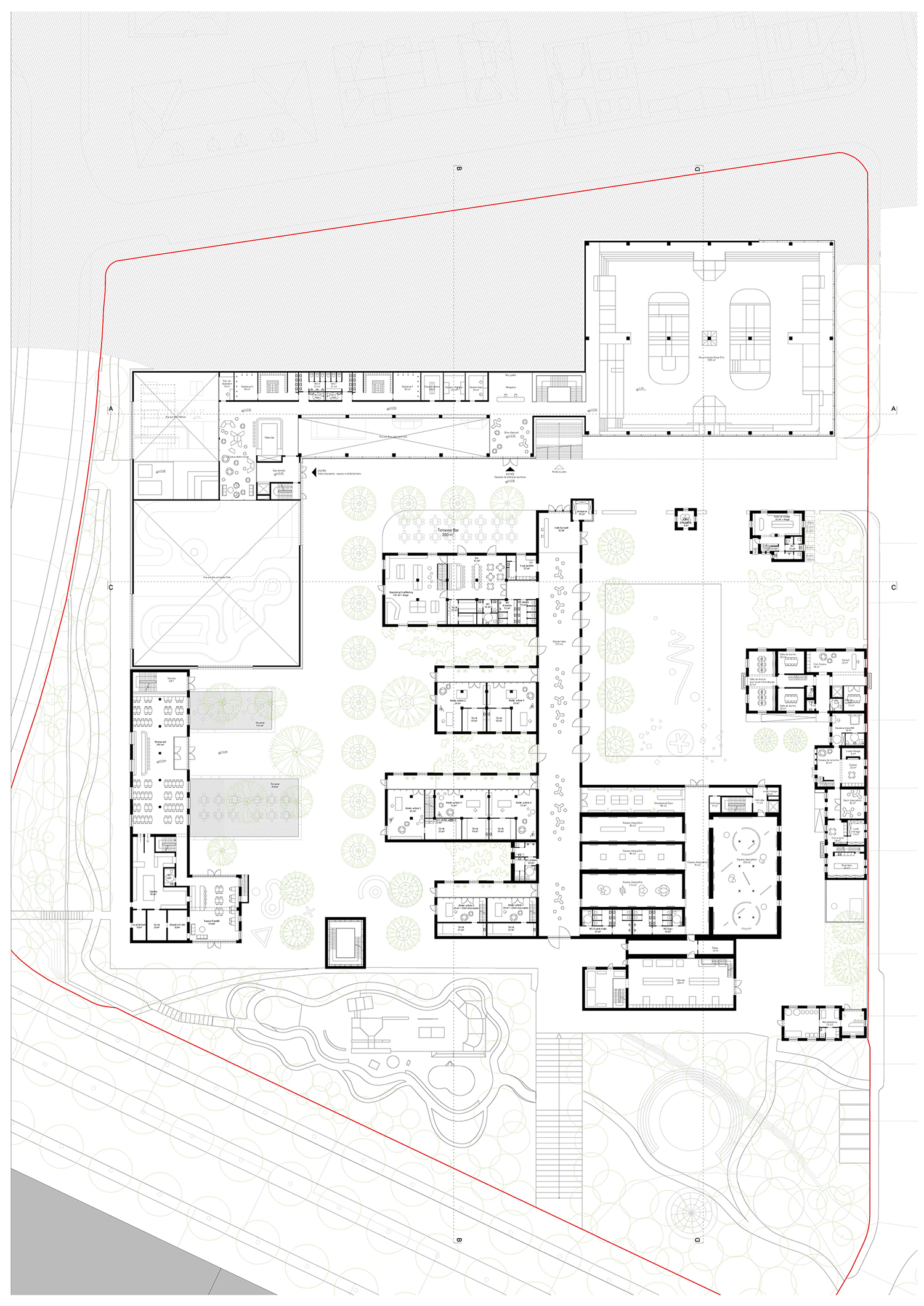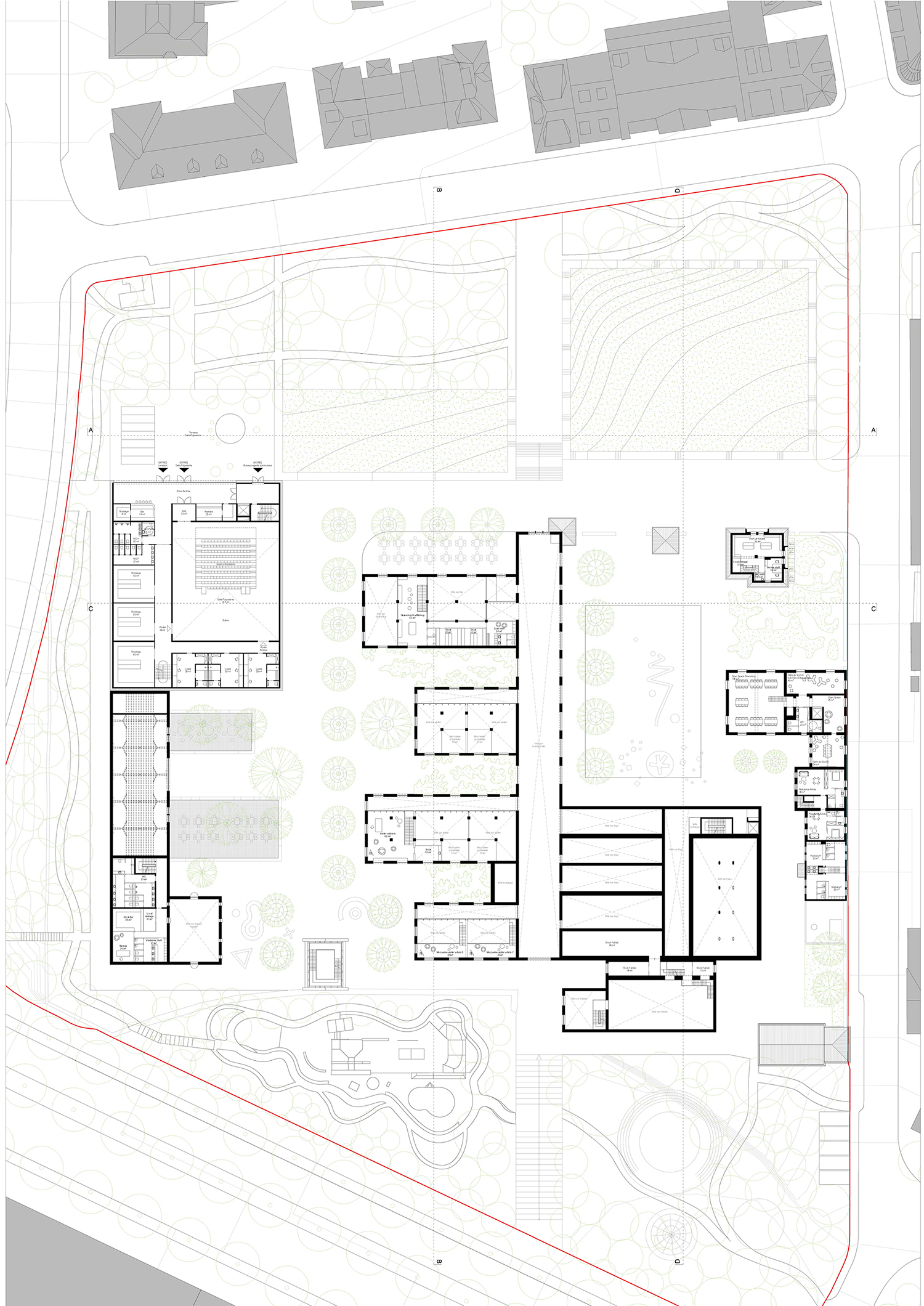Respecting heritage and memory is crucial for the success of an urban project. This allows for the preservation of the history and identity of the site while creating new attractive spaces. Functional and generational diversity is at the core of the project, offering a space dedicated to culture, urban sports, commerce, and inter-generational activities. It also involves providing a variety of activities both inside and outside the site to attract a diverse audience.
D’Schluecht-House
Conversion and development of the former Hollerich Slaughterhouse site - Luxembourg City, Luxembourg
Where art meets gravity
The "D'Schluechthouse" project is above all an opportunity to enhance urban life. There are numerous urban and landscape challenges that must meet the needs and expectations of the population.
This involves creating urban synergy with the new district by ensuring seamless connections. We have designed this project as a new city center and a landmark showcasing the new architectural identity of the Schluechthaus, making it a visual reference point for residents and visitors.


Providing a variety of activities (both indoor and outdoor) to attract a diverse audience.
The programmatic flexibility of “Schluechthaus” is reflected in the outdoor spaces offered. In the buffer zone of the surrounding forest, several programs and activities allow for closer contact with a wilder nature by providing intimate spaces. On the north side, the accessible green roofs of the sports hall become panoramic terraces overlooking the city and are defined by the presence of linear productive gardens and multi-functional lawns. The south side features a skate-park located in the forest, thus becoming a gathering place for the local community.
In the central urban area, spatial possibilities are also multiplied. Two main squares offer flexible spaces for events and temporary programs.
Location
Luxembourg City, Luxembourg
Year
2022
Typology
Adaptive Reuse
Cultural
Sports
Urbanism
Size
12 000 m2
Status
Competition
Client
City of Luxembourg
Associate
Associate architect : MVRDV
External Collaborator
Landscape architects : Open Fabric, Cultural engineers : Kanju, Environmental engineers : Ramboll
Photographer
Renderings : VIVID
Award
3rd prize, european competition




